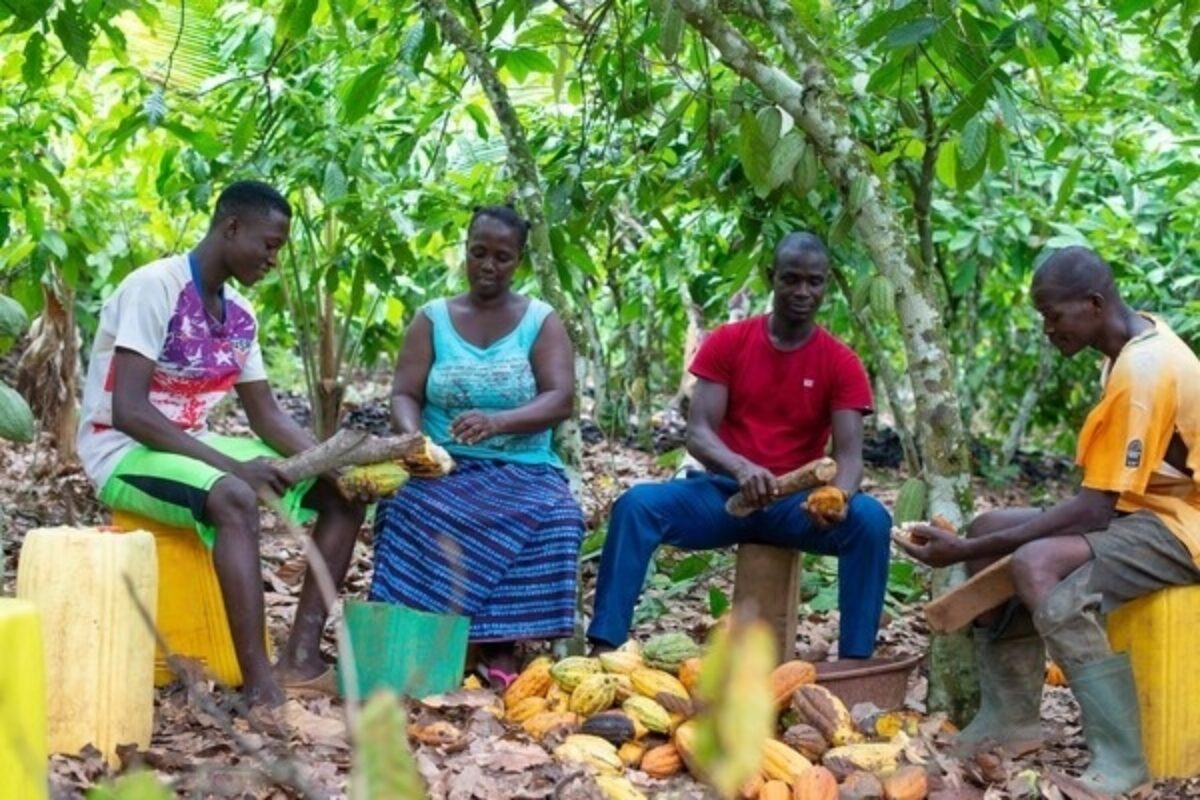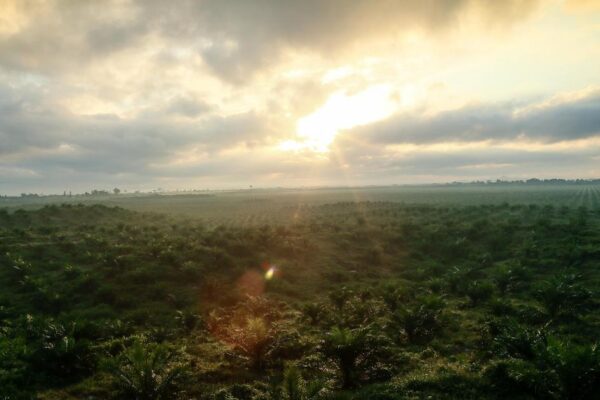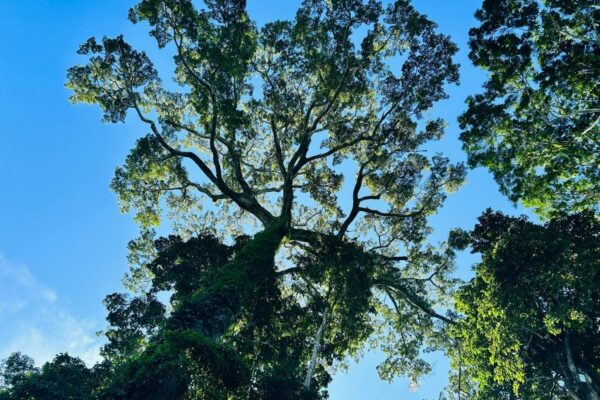An opinion piece by Gerome Tokpa, Director of Earthworm Foundation Africa Region
I've spent the past decade with cocoa farmers in Côte d'Ivoire and Ghana, walking their fields, hearing their stories, and witnessing their hard work. Lately, though, I’ve been worried.
The soil is worn out. The trees are ageing. Rainfall is changing. Cocoa isn’t what it used to be. Yields are shrinking, and with every smaller harvest comes tough, sometimes painful decisions for farming families.
This is about chocolate, and whether future generations will be able to enjoy it at all. A symbol of joy and celebration, chocolate is at risk of becoming a luxury few can afford, if it remains available at all. But it’s also about the millions of farmers and families whose livelihoods depend on cocoa, and who are already feeling the strain of a system under pressure.

West Africa leads the world in cocoa production, with Côte d'Ivoire alone supplying over 40% of the world’s cocoa. Together with Ghana, the two countries produce more than 60% of the global supply, over 70% of which is exported to Europe and North America for chocolate products by brands like Nestlé, Ferrero, Mars, and Lindt & Sprüngli. So, when we talk about cocoa’s future in West Africa, we also talk about chocolate’s future worldwide.
But the industry is in crisis. Diseases like Cocoa Swollen Shoot Virus (CSSV) and Black Pod disease are spreading rapidly, cutting yields by 30–50% in some areas. At the same time, rising costs for fertiliser, tools, and labour, along with increasingly erratic rainfall, are making farming harder.

The soil is depleted, the cocoa trees are ageing, and so are the farmers. Few young people are stepping in, as cocoa farming doesn’t offer a decent income. Most farms are around 3 hectares, yielding just 450–500 kg/ha/year, with annual earnings below XOF 3.6 million (about $6,500 USD), well under national poverty lines and far from a living income.
In desperation, some farmers clear forests to plant more cocoa. But this short-term fix deepens the crisis, damaging ecosystems, eroding biodiversity, and accelerating climate change, further reducing yields. Cocoa cultivation, alongside rubber and palm oil, is one of the leading drivers of deforestation in West Africa.
There’s another way. The Cavally Natural Reserve Conservation Project, supported by Earthworm Foundation, companies and government partners, shows how collaboration can drive real impact. Since 2017, deforestation in the reserve has dropped from 3.78% to just 0.05%.
But replanting cocoa trees alone isn’t enough. We need to regenerate ecosystems and support those who care for them by:
- Investing in agroforestry to restore soil, boost biodiversity, and diversify farmers’ income.
- Promoting polyculture to improve soil health, reduce pests, and strengthen food and income security.
- Training farmers in sustainable practices to boost yields without expanding farmland.
- Expanding access to finance for long-term farm investments.
- Above all, treating farmers as co-creators, valuing their knowledge, dignity, and role in shaping the industry’s future.
Côte d’Ivoire’s national forest and wildlife inventory (IFFN) reminds us: forests, wildlife, land rights, and rural economies are deeply interconnected. Solutions need to be be collaborative and grounded in local realities.
I have a question for all of us, consumers, businesses, policymakers: What is the real cost of a chocolate bar?
Is it just what we pay at checkout? Or does it also include degraded forests, exhausted soils, children out of school, or farmers who can’t afford medicine?
Would we be willing to do things differently if we understood the true cost?
Some companies are already leading the way.
Tony’s Chocolonely, for example, partners directly with eight cocoa cooperatives in Ghana and Côte d’Ivoire and sources 100% traceable beans.

Its ‘Tony’s Open Chain’ platform enables other chocolate brands to adopt the same approach. In 2022, Tony’s paid over €8 million in additional premiums. In 2023/24, it paid 44% above the government price in Côte d’Ivoire and 18% above in Ghana, benefiting over 20,000 farmers through traceable, deforestation-free sourcing, an approach that helped cut child labour rates among long-term partners to as low as 3.9%.
In Côte d’Ivoire, Earthworm Foundation’s work in the Cavally landscape shows what’s possible when collaboration moves beyond commitments.
Through agroforestry training, land-use planning, and access to finance, over 795 farmers have boosted yields without clearing forests. Community savings groups now serve 1,200 people, many of whom are women, while a child labour monitoring system reaches 3,500 households. Satellite and local patrols protect over 3,300 hectares of regenerating forest, now safeguarded under its 2023 Natural Reserve status.

These aren’t perfect models but they show what’s possible when companies, communities, and governments work together.
Chocolate doesn’t have to disappear. But keeping it on our shelves means investing in the people and places who make it possible.
We stand at a crossroads. We can continue down the path of short-term profits and long-term loss or choose a new path. One rooted in regeneration, partnership, and shared responsibility.
The future of chocolate depends on the choices we make today.
Let’s make them wisely.


